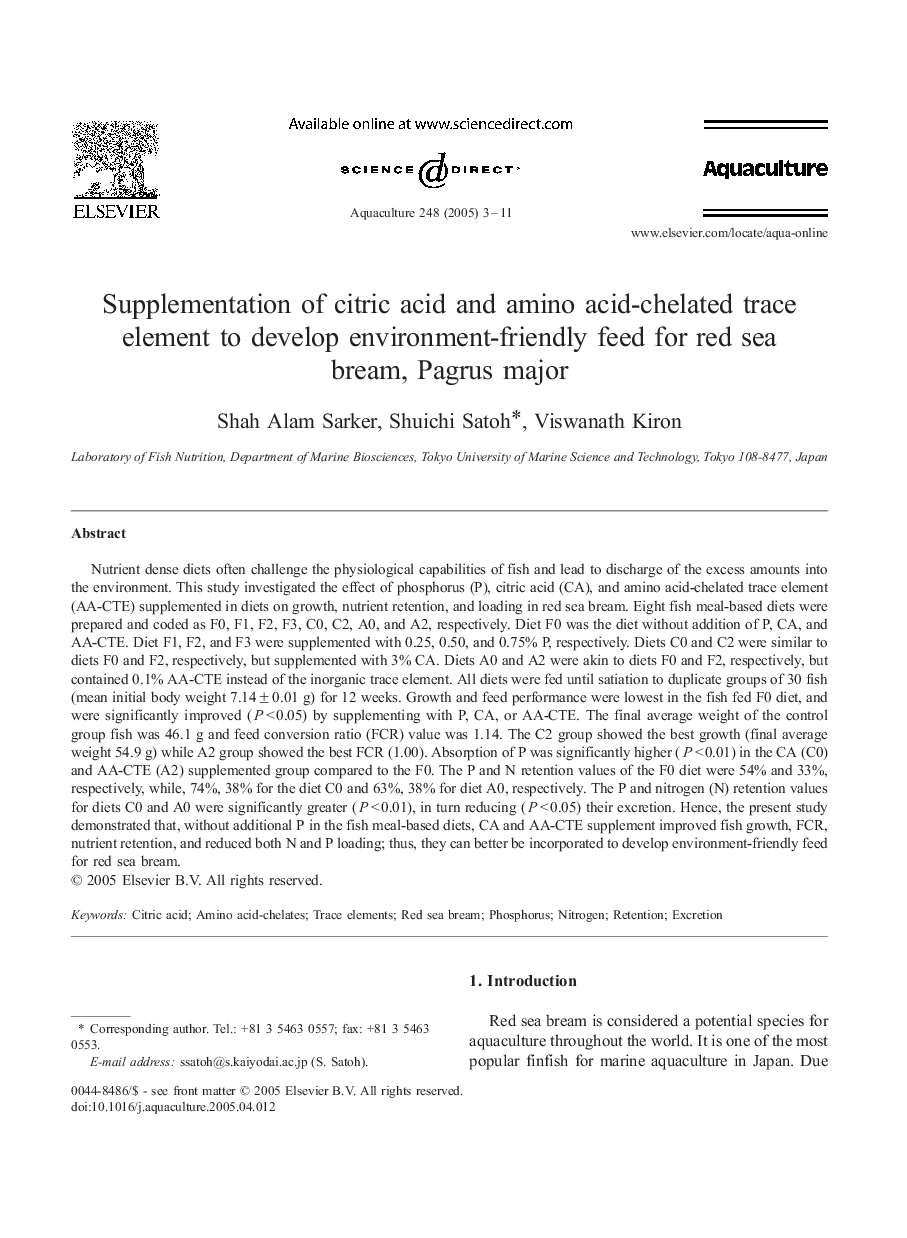| Article ID | Journal | Published Year | Pages | File Type |
|---|---|---|---|---|
| 8974805 | Aquaculture | 2005 | 9 Pages |
Abstract
Nutrient dense diets often challenge the physiological capabilities of fish and lead to discharge of the excess amounts into the environment. This study investigated the effect of phosphorus (P), citric acid (CA), and amino acid-chelated trace element (AA-CTE) supplemented in diets on growth, nutrient retention, and loading in red sea bream. Eight fish meal-based diets were prepared and coded as F0, F1, F2, F3, C0, C2, A0, and A2, respectively. Diet F0 was the diet without addition of P, CA, and AA-CTE. Diet F1, F2, and F3 were supplemented with 0.25, 0.50, and 0.75% P, respectively. Diets C0 and C2 were similar to diets F0 and F2, respectively, but supplemented with 3% CA. Diets A0 and A2 were akin to diets F0 and F2, respectively, but contained 0.1% AA-CTE instead of the inorganic trace element. All diets were fed until satiation to duplicate groups of 30 fish (mean initial body weight 7.14 ± 0.01 g) for 12 weeks. Growth and feed performance were lowest in the fish fed F0 diet, and were significantly improved (P < 0.05) by supplementing with P, CA, or AA-CTE. The final average weight of the control group fish was 46.1 g and feed conversion ratio (FCR) value was 1.14. The C2 group showed the best growth (final average weight 54.9 g) while A2 group showed the best FCR (1.00). Absorption of P was significantly higher (P < 0.01) in the CA (C0) and AA-CTE (A2) supplemented group compared to the F0. The P and N retention values of the F0 diet were 54% and 33%, respectively, while, 74%, 38% for the diet C0 and 63%, 38% for diet A0, respectively. The P and nitrogen (N) retention values for diets C0 and A0 were significantly greater (P < 0.01), in turn reducing (P < 0.05) their excretion. Hence, the present study demonstrated that, without additional P in the fish meal-based diets, CA and AA-CTE supplement improved fish growth, FCR, nutrient retention, and reduced both N and P loading; thus, they can better be incorporated to develop environment-friendly feed for red sea bream.
Related Topics
Life Sciences
Agricultural and Biological Sciences
Aquatic Science
Authors
Shah Alam Sarker, Shuichi Satoh, Viswanath Kiron,
